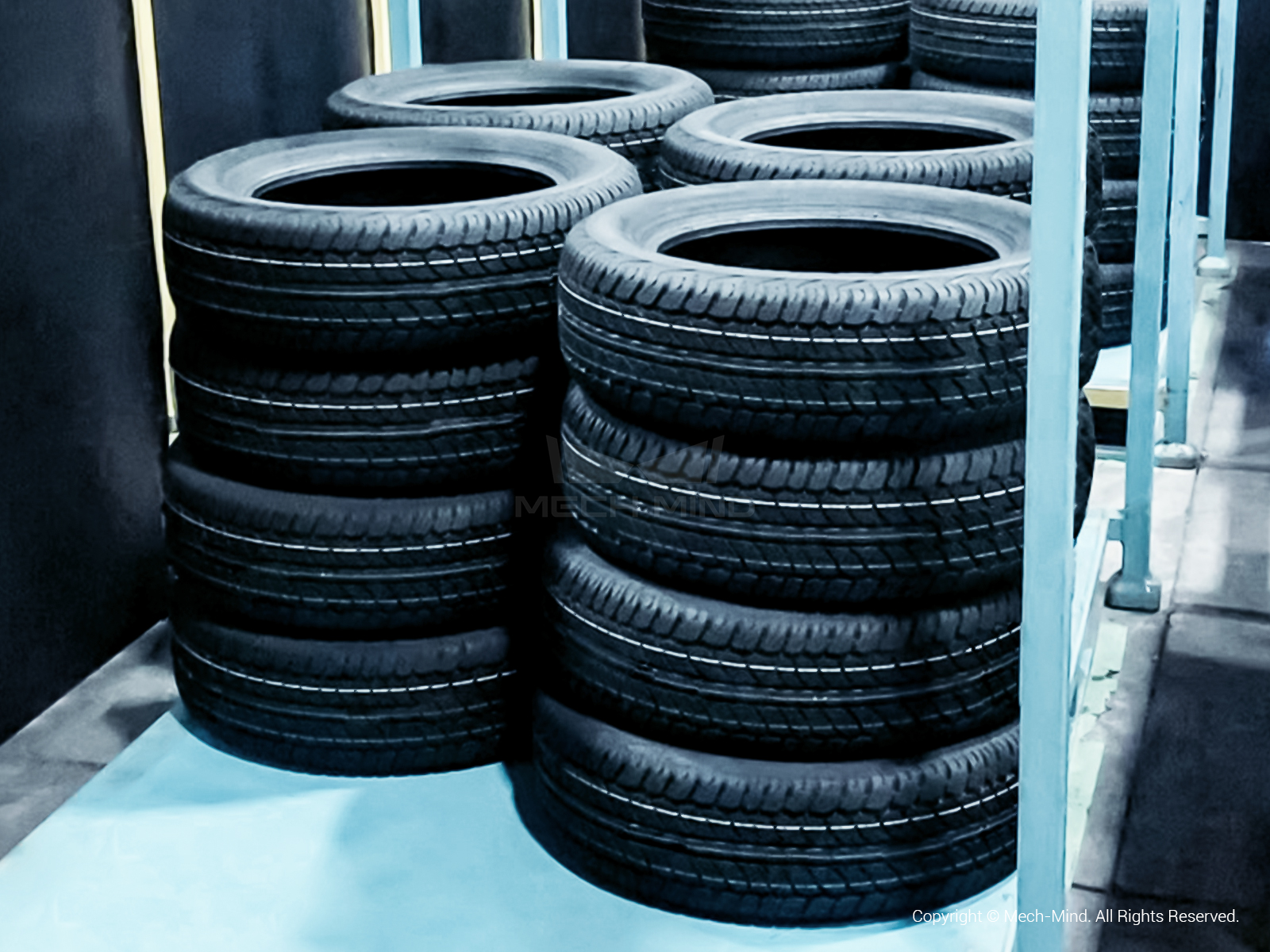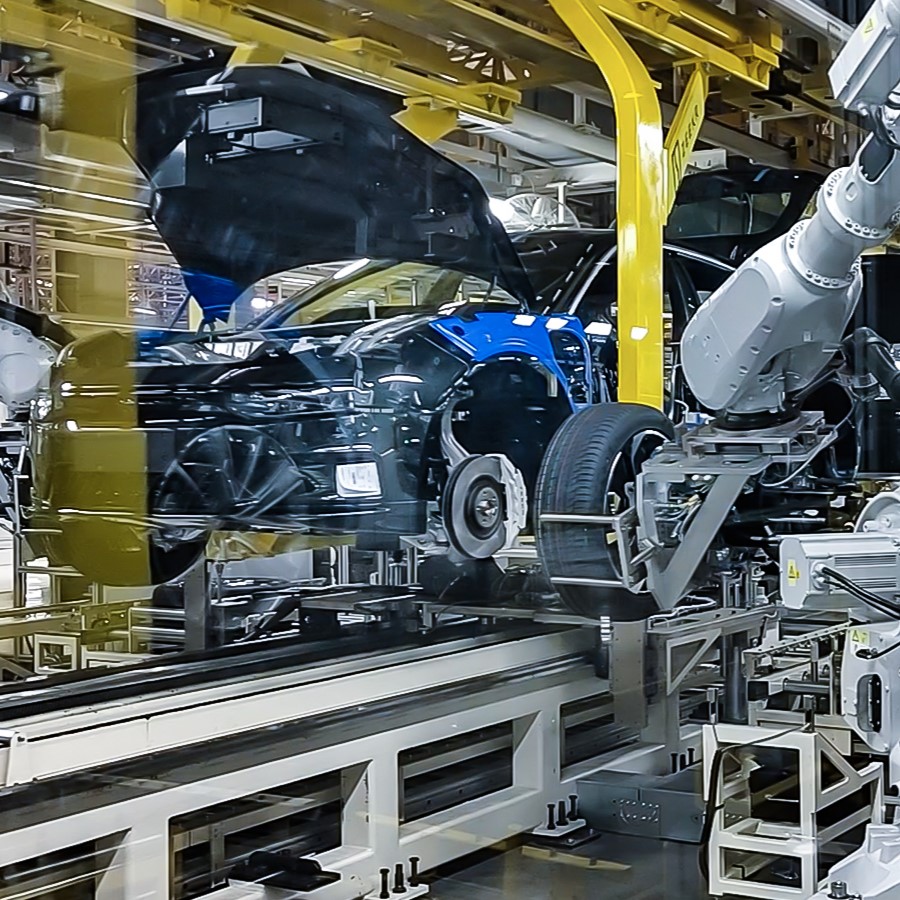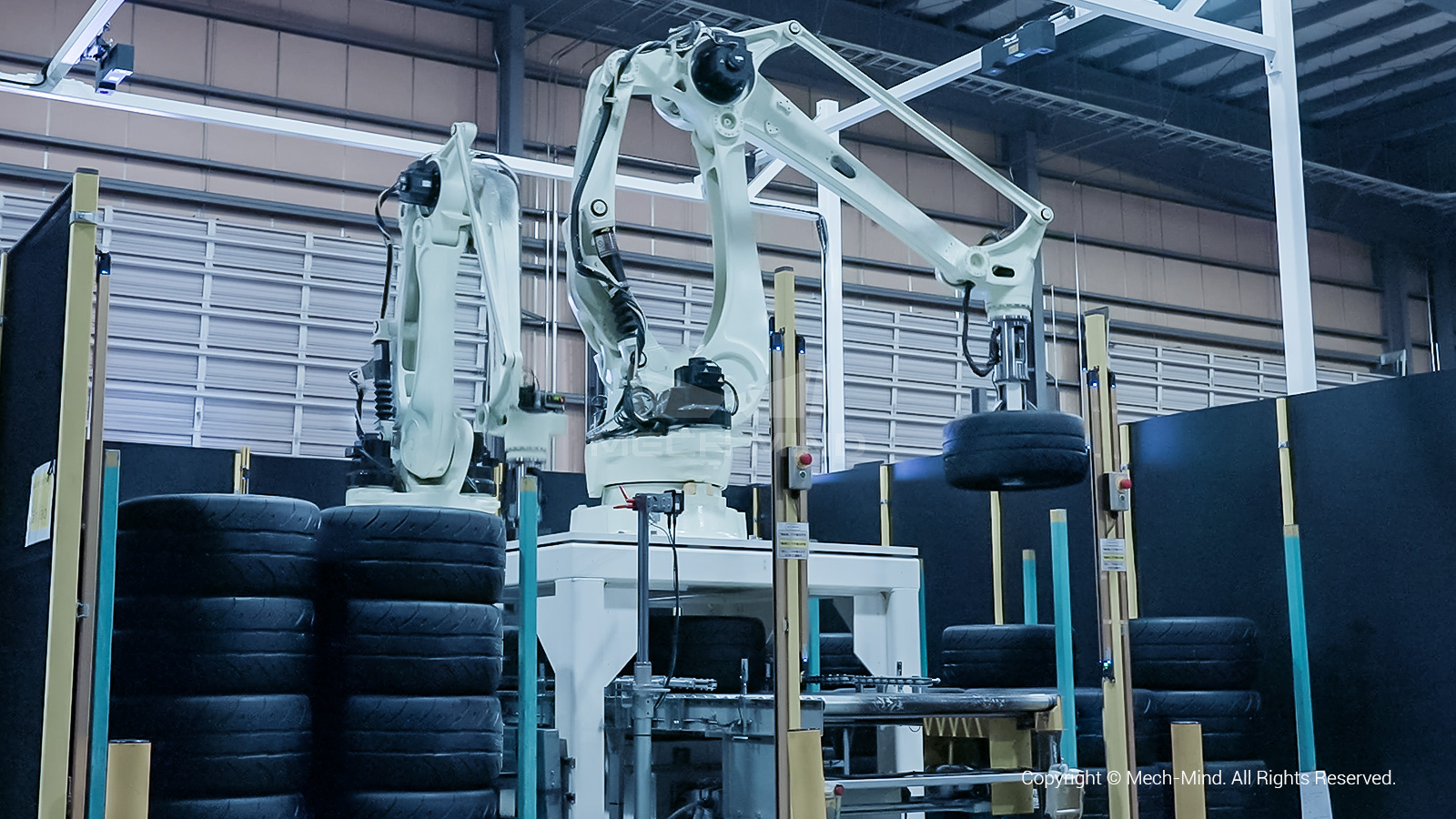

Tire handling
Industry: Automotive Production
Case Study
Customer demand
Tires are indispensable parts and consumables for automobiles, which is why there is a great demand for tires from both automobile manufacturers and the aftermarket. Due to the increasing market demand, automation of tire manufacturing and warehousing has become extremely important.
To improve warehouse operations, the tire warehouse operator decided to automate tire handling with Mech-Mind's 3D vision solution.
Reasons for automating
This customer operates one of the largest tire warehouses in Japan. During peak order periods, tens of thousands of tires leave the warehouse every day. However, efficient tire handling is a tricky task. Poor tire handling can have far-reaching consequences for production flow, employee safety and warehouse management.
- Tires are large (600-800 mm) and heavy (9-70 kg). Manual handling requires a lot of physical labor, which increases the risk of work-related injuries and slows down the production process.
- New tires contain vulcanized substances and some solid particles. Manual handling of tires, especially in the long term, can be dangerous because they are directly exposed to air filled with pollutants.
- Last but not least, the warehouse integrates handling, barcoding and conveying processes. Manual operation with only one line is inefficient, and human errors can cause goods to jam and affect the efficiency of warehouse management. Therefore, the warehouse urgently needs to be automated.
Challenges
Tires are made of black rubber, which can easily absorb light. They are also manufactured in sometimes complex structures - with deep grooves on the surface. This also presents a difficult challenge for accurate 3D imaging.
Working under challenging ambient light situations
The strong ambient light in the factory is quite disturbing for the 3D vision system. The robot cell is located at the entrance to the warehouse, and sunlight enters during the day. There is also a light source on the roof of the warehouse.
Requires large Field of View
Tires are stacked on pallets and transported to a specific location by a forklift. The entire pallet can be up to 1500 x 1800 x 1500 mm. To ensure that the robot can move freely between the pallet and the conveyor belt, a certain amount of additional space must be kept free. This means that the 3D camera must have a large field of view and depth of field to cover the entire workstation.
Limited space
The facility is a typical Japanese plant with an extremely compact layout. The code reading and conveyor systems are integrated into a single workstation where two robots operate simultaneously. The 3D vision system must have path planning and collision detection functions to navigate the robots and avoid collisions with the environment.
The Mech-Mind solution
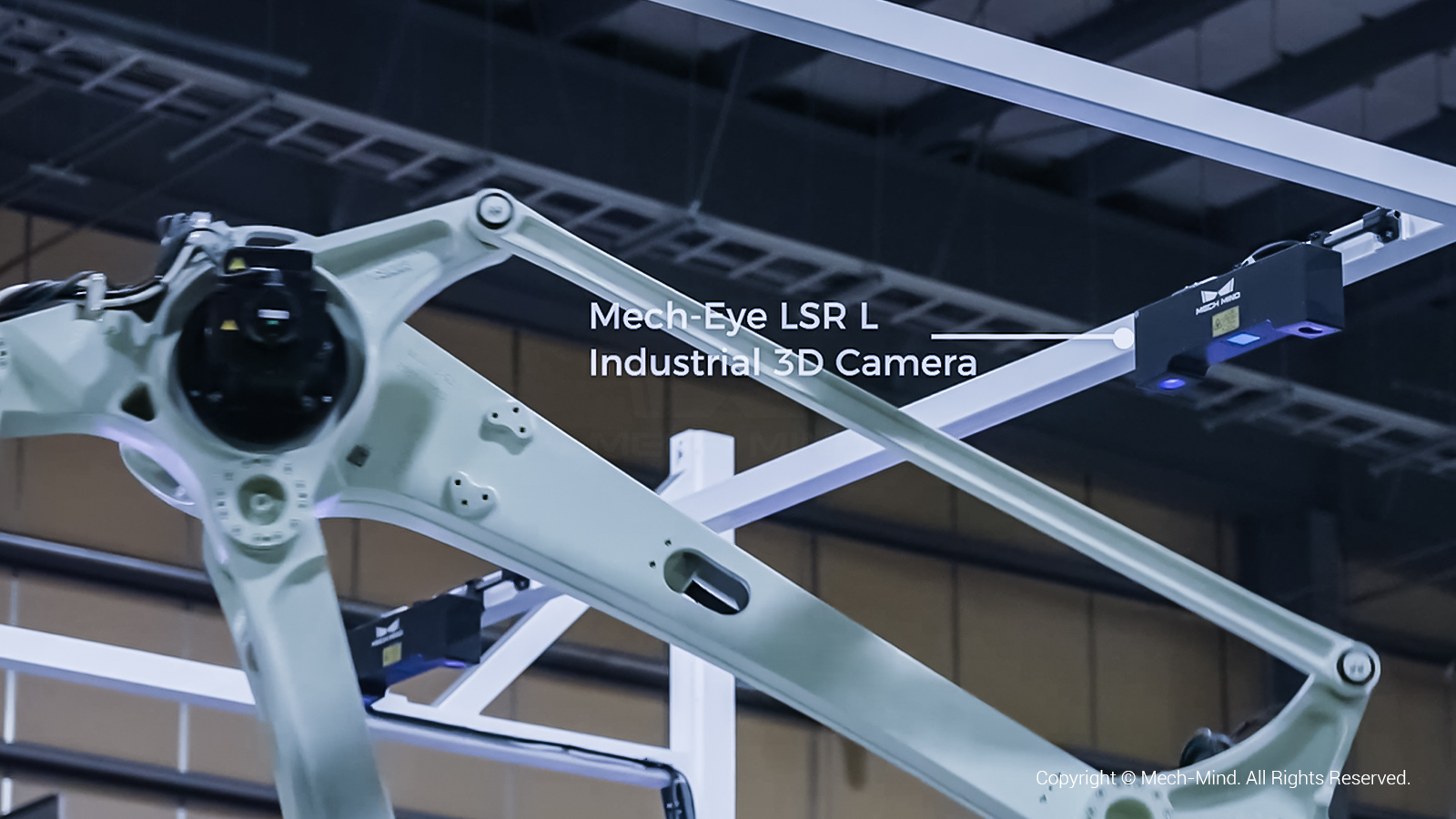
Enables accurate and reliable handling
The Mech-Eye LSR L industrial 3D camera provides accurate 3D information of tires with black surfaces and deep grooves. It can produce clear and detailed 3D point clouds even under difficult lighting conditions (> 20000 lx).
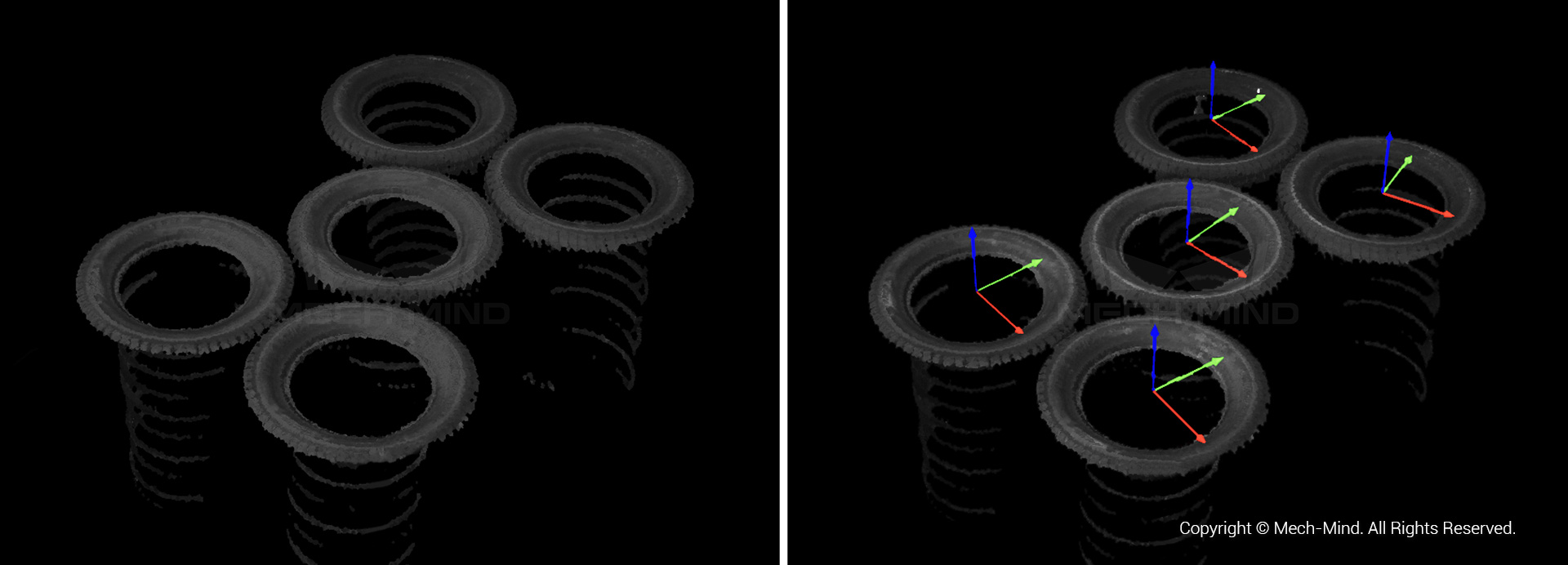
The Mech-Eye LSR L camera can respond to working conditions that require high accuracy and a large field of view. The camera's field of view (3000 × 2400 mm @ 3.0 m) can cover larger pallets with offsets in place, leaving enough space for robot movements.
Mech-Mind's solution perfectly integrates the 3D vision system with the robot and end effector. The 3D vision system predicts possible collisions in advance, optimizes the robot's trajectory and guides it to pick accurately in a compact space.
Increased Flexibility
The powerful 3D image processing software supports a variety of tires with different specifications. It can quickly adapt to new products to respond to changing market demand.
Seamlessly integrating with barcode and transportation systems, Mech-Mind's 3D vision system connects every logistical link in the warehouse and enables dynamic transfer without manual intervention.
Improved efficency
Works faster: The 3D vision system works simultaneously with the robot by fixing the camera statically above the workstation so that image processing time does not take up the entire cycle time. A single workstation can process more than 1600 tires per hour, which significantly speeds up the entire production process.
Works without interruption: the automated workstation can work around the clock without tiring; throughput is increased almost twofold, ensuring delivery of orders even during peak periods. Employees can free themselves from fatigue and monotonous tasks. This allows warehouses to use their staff for more creative and meaningful work, adding value to warehouse management.
3D-Vision
in automotive production
Want to know how 3D cameras can improve your automotive production? There are endless possibilities - and we've compiled the most important ones in this guide:
- 5 typical applications
- 5 detailed use cases, including challenges & solutions
- 8 more use case examples
Contact
